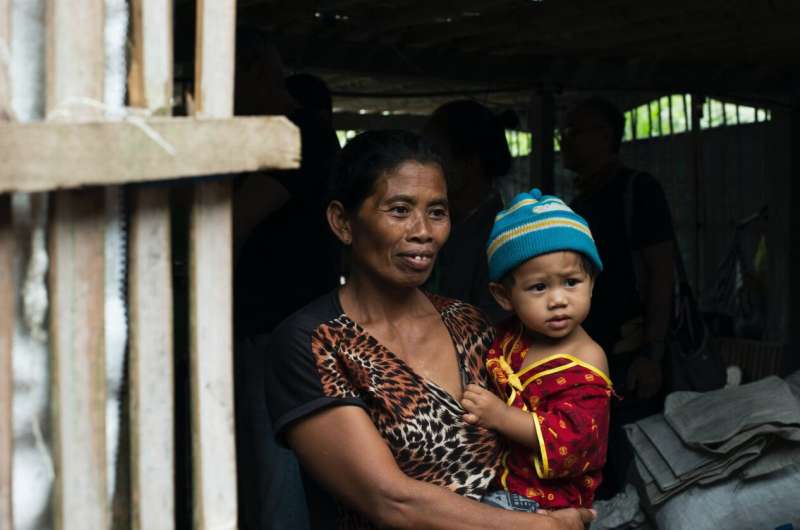Putting survivors at the center of disaster response

In 2016, the first ever World Humanitarian Summit brought together 9,000 participants from across multiple sectors and civil society, with the aim of creating meaningful change for the world's most vulnerable. Over 3,500 commitments were made, including the need to put survivors of natural disasters at the center of the disaster response and ensure no one is left behind.
A team of King's researchers have worked with humanitarian organizations, their local partners and disaster survivors to put this commitment into practice. By identifying the shortcomings of the previous top-down approach, they have developed new working practices that are transforming the international humanitarian sector.
As a result, countries are now seeing faster responses, improved management of disaster funds and greater autonomy for survivors to drive how their communities are to be rebuilt. The Kenya Government, for example, has since updated its Disaster Risk Management policy and formally recognized the role of local organizations in disaster response.
From top-down to survivor-led response
In the immediate aftermath of a natural disaster, the response is generally localized with neighbors often providing the first response. Very often, and especially in poorer countries, as the immediate response shifts to reconstruction, it quickly becomes managed and led by international humanitarian non-governmental organizations (NGOs).
This international humanitarian response is needed due to a lack of local capacity, especially in local and national government. However, by taking leadership roles in the often-chaotic post-disaster period, the humanitarian sector can miss the opportunity to build upon local ambitions and risk creating a culture of dependence on external leadership—marginalizing survivors from their own recovery. It also encourages survivors to see themselves and be seen by external agencies as little more than beneficiaries of charity, potential employees or sources of local knowledge for project design.
To address this, King's researchers analyzed disaster responses from the viewpoint of survivors, speaking directly with them to understand how they were affected. They then created a framework—known as the "Survivor-Led Response"—that lists the top priorities the humanitarian sector should support local people, their local governments and organizations with. These are:
- immediate livelihood support (not simply disaster relief), e.g. in the form of microcredits or income-generating activities
- psychological support to enable crisis survivors to 'bounce back' better
- support for community cohesion and effective communication between survivors
- support for effective communication between the community and implementing organizations
- coordination of activities with local government from the outset to ensure long-term community resilience
- a forum for confronting the root causes of vulnerability and advocating for change
"The Survivor-Led Response hands control back to the people whose lives have been affected by disasters. It allows them to rebuild their communities and lives in the way that they know is best. In the past, well meaning, international organizations tended to take control of response and recovery relegating local leaders to the position of aid beneficiaries or at best employees. Putting local people and organizations at the center of coordinated response and recovery improves the quality and long-term consequences of the response for individual well-being, growth and local capacity through which recovery can Build Back Better for long lasting change," says Professor Mark Pelling, project lead and Professor of Geography
Transforming the humanitarian sector
The "Survivor-Led Response" framework was tested in low-income countries (Myanmar and Kenya) and in high-income countries (Sint Maarten), before being adopted by Christian Aid—the first NGO to institutionalize it and make it a priority for its Humanitarian division.
As a result, Christian Aid found that in Myanmar they could build on local leadership and organizational capacities and respond quicker to natural disasters. This is in part because harnessing the networks of community-based organizations made it possible "to reach minority ethnic groups who we would not have reached otherwise, and who would have had only limited humanitarian relief," said Country Director of Myanmar.
Meanwhile, Christian Aid found that in Gaza, working with community groups allowed more local control over funds—directly improving the well-being of 73,700 people. The NGO has also found that that in Kenya, the framework has proven to reduce existing tensions by bringing together local NGOs, communities and government for the first time.
"The inclusion of 'survivor-led response' is significant because our core humanitarian priorities set out our overall approach, structure priorities and govern how local branches of Christian Aid operate," says the Christian Aid director.
As more and more NGOs and other organizations around the world adopt the approach, there is a chance for communities to build back better in the wake of devastation.
Provided by King's College London





















